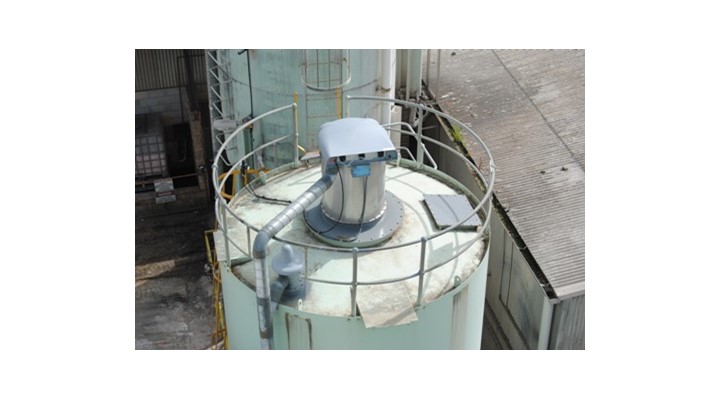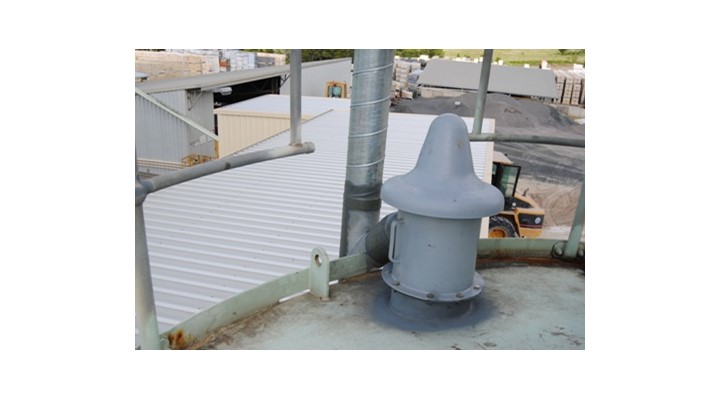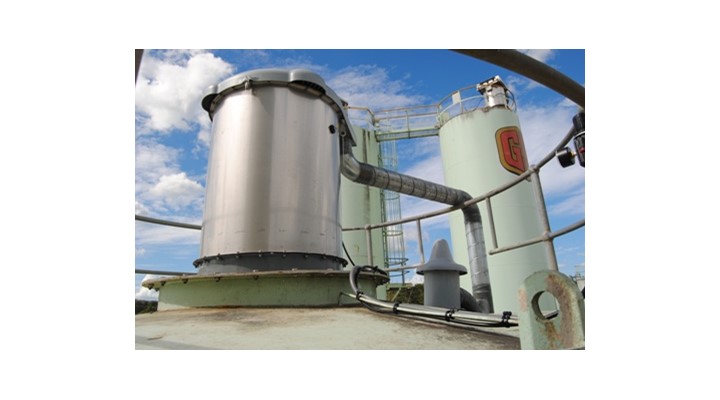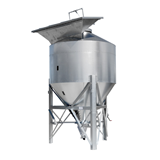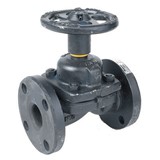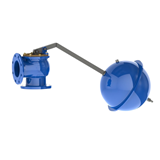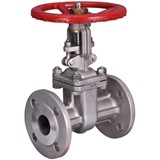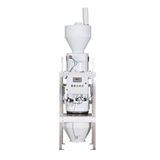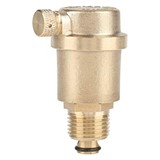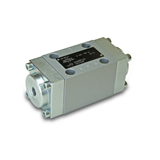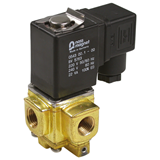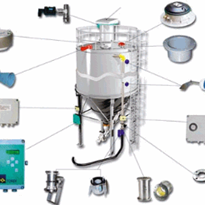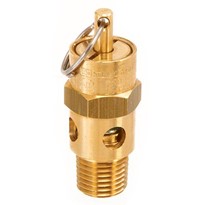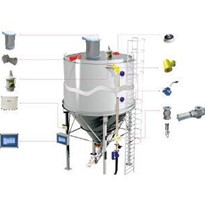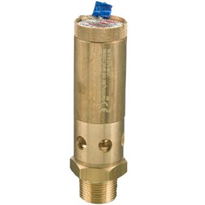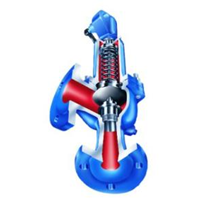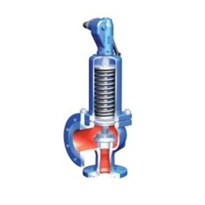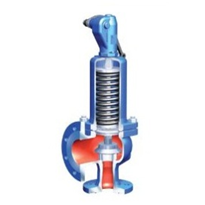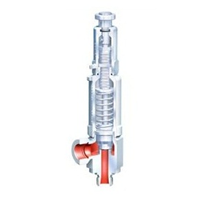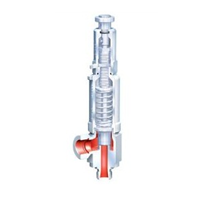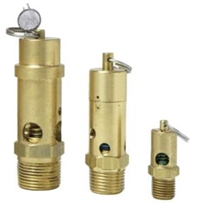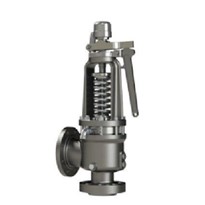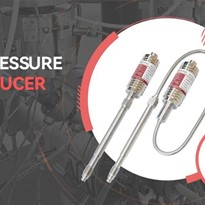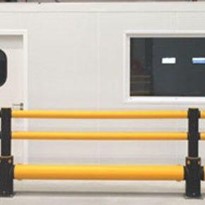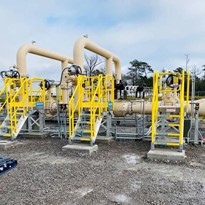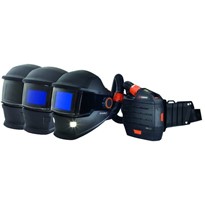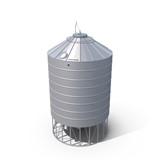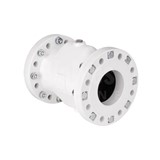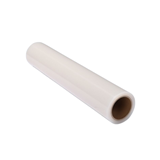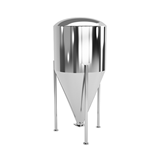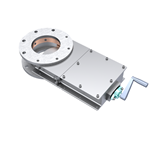Fortunately the technology exists to protect silos from such dangers, but how effective are modern safety valves and to what extent have they improved in recent times?
According to Wayne Hanson from WAM Australia, a global leader in bulk solids equipment, the VHS pressure relief valve protects the silo from abnormal pressure conditions which can arise when silos are being filled by tankers.
"Predominantly the new VHS is a safety valve to ensure the silo is not at risk of being damaged by either over-pressurisation or under-pressurisation. It also protects the dust collector at the top of the unit," Hanson told IndustrySearch.
Safety valve upgrade creates advantages
What are the main advantages of the new VHS over traditional pressure relief valves?
"The valve is an upgrade to existing technology on two fronts," Hanson said.
"Firstly, the weight is a lot less for people to carry and install because the casing and cover is polymer. At 8kg it is now 14kg lighter than the original WAM VHS safety valve.
"And secondly, the lifespan of the unit will be considerably longer because of the Sint polymer that we're manufacturing it out of, which is also UV stabilised.
"We can set the weights on the pressure relief valve to suit the silo and the amount of pressure that's actually experienced in the unit – preset for a maximum negative pressure of -0.005 bar and maximum excess pressure of +0.05 bar."
Hanson believes the fact that pressure can be regulated by the amount of weights on the unit separates it from its rivals.
"It can be more beneficial than those...which just have weighted flaps that cannot be regulated," he said.
"The WAM VHS safety valve is a market leading valve in Australia because our environmental protection laws stipulate we must duct to ground, whereas in other countries they still duct to the atmosphere.
"The special double-acting diaphragm, which is pervious to air deals with both excess and suction pressure relief. The diaphragm is designed to avoid blockage as well as the formation of material crusts," Hanson said.
"Being able to regulate the valve means it can be more accurately calibrated for the end user. Ease of use is one of the most significant benefits of the unit."
Another positive feature is the ease of maintenance – the membrane and the weights can be replaced if necessary
"It's not only the risk of over-pressurisation you have to worry about; at the same time, when the silo is being emptied you can get under-pressurisation.
"In the event of excess pressure this interaction enables air from inside the silo to flow back into the atmosphere while in the case of suction pressure, the air penetrates from the atmosphere into the silo," Hanson said.
Protection against the elements
WAM has successfully installed a number of valves recently, including two in Queensland for a masonry block producer.
"We contacted our customer because we knew we'd had some issues with the wear of the unit on their existing silos," Hanson said.
"One of the issues with previous models of the VHS was it was predominantly a metal product constantly exposed to the atmosphere. In Queensland especially, where you get a lot of humidity and rain, these outside elements increase the likelihood of increased wear on the unit.
"So by upgrading to the polymer model, which is UV stabilised, our customer will have an increased life of the units."
In Queensland WAM has an association with a company, FSI, who look after a lot of the maintenance and installation work, while in Victoria WAM has its own service and installation department.
They visit sites to perform silo and equipment maintenance on silos and dust collectors for concrete batching plants, water treatment plants, and a number of associated industries.
"We also do a lot of work with heavy industries such as mining, quarrying, food processing, chemicals, foundry, and glass processing," Hanson said, adding that the VHS handling an air volume of up to 5,000m3h is suitable for the protection of almost all silos.
"The product has great potential in the marketplace because there are still so many silos out there not correctly vented," he said.
- Suppliers
- New to IndustrySearch? Book a Demo
- Advertise with us
- Login
- Email Marketing
- Buyers
- Get Quotes
- Articles & Ideas
- Login
- Subscribe to newsletter
- My Details
- Get Quotes
- Automation & Control
- Automotive Workshop Equipment
- Commercial Cleaning Equipment & Supplies
- Construction Equipment & Heavy Machinery
- Conveyor Systems & Components
- Electrical & Power Generation Equipment
- Electronic Components
- Farming & Agriculture
- Food & Beverage Processing
- Forklifts & Forklift Attachments
- Hydraulic & Pneumatic Equipment
- Industrial Materials, Tools & Components
- Industrial Pumps
- IT Hardware & Industrial Computing
- IT Software & Applications
- Laboratory Equipment & Instruments
- Manufacturing & Industrial Equipment
- Material Handling & Lifting Equipment
- Metalworking & Machining
- Mining Equipment & Machinery
- Packaging & Labelling Machinery
- Pallet Handling Equipment
- Personal Protective Equipment
- Security & Surveillance
- Test & Measurement
- Transport & Logistic Equipment
- Warehouse Storage, Shelving & Racking
- Waste Treatment & Environmental Management
- Welding Machines & Accessories
- Woodworking & Joinery Machines
- Workplace Equipment
- Workplace Safety Equipment
- Get Quotes
- Automation & Control
- Automotive Workshop Equipment
- Commercial Cleaning Equipment & Supplies
- Construction Equipment & Heavy Machinery
- Conveyor Systems & Components
- Electrical & Power Generation Equipment
- Electronic Components
- Farming & Agriculture
- Food & Beverage Processing
- Forklifts & Forklift Attachments
- Hydraulic & Pneumatic Equipment
- Industrial Materials, Tools & Components
- Industrial Pumps
- IT Hardware & Industrial Computing
- IT Software & Applications
- Laboratory Equipment & Instruments
- Manufacturing & Industrial Equipment
- Material Handling & Lifting Equipment
- Metalworking & Machining
- Mining Equipment & Machinery
- Packaging & Labelling Machinery
- Pallet Handling Equipment
- Personal Protective Equipment
- Security & Surveillance
- Test & Measurement
- Transport & Logistic Equipment
- Warehouse Storage, Shelving & Racking
- Waste Treatment & Environmental Management
- Welding Machines & Accessories
- Woodworking & Joinery Machines
- Workplace Equipment
- Workplace Safety Equipment
Trusted by 1,000,000+ Australian industrial buyers
Buyers
- Discover products & solutions
- Login
- Subscribe To Newsletter
- Browse All Products
- Read Articles
Suppliers
Advertise
- Promote your products & solutions
- New to IndustrySearch? Book a Demo
- Login / Forgot Password
- Advertise Your Products
- Success Stories
- Email Marketing
- Suppliers
- Advertise with us
- Login
- Email Marketing
- Buyers
- Get Quotes
- Articles & Ideas
- Login
- Subscribe to newsletter
- My Details
Get Quotes
- Automation & Control
- Automotive Workshop Equipment
- Commercial Cleaning Equipment & Supplies
- Construction Equipment & Heavy Machinery
- Conveyor Systems & Components
- Electrical & Power Generation Equipment
- Electronic Components
- Farming & Agriculture
- Food & Beverage Processing
- Forklifts & Forklift Attachments
- Hydraulic & Pneumatic Equipment
- Industrial Materials, Tools & Components
- Industrial Pumps
- IT Hardware & Industrial Computing
- IT Software & Applications
- Laboratory Equipment & Instruments
- Manufacturing & Industrial Equipment
- Material Handling & Lifting Equipment
- Metalworking & Machining
- Mining Equipment & Machinery
- Packaging & Labelling Machinery
- Pallet Handling Equipment
- Personal Protective Equipment
- Security & Surveillance
- Test & Measurement
- Transport & Logistic Equipment
- Warehouse Storage, Shelving & Racking
- Waste Treatment & Environmental Management
- Welding Machines & Accessories
- Woodworking & Joinery Machines
- Workplace Equipment
- Workplace Safety Equipment
Get Quotes
- Automation & Control
- Automotive Workshop Equipment
- Commercial Cleaning Equipment & Supplies
- Construction Equipment & Heavy Machinery
- Conveyor Systems & Components
- Electrical & Power Generation Equipment
- Electronic Components
- Farming & Agriculture
- Food & Beverage Processing
- Forklifts & Forklift Attachments
- Hydraulic & Pneumatic Equipment
- Industrial Materials, Tools & Components
- Industrial Pumps
- IT Hardware & Industrial Computing
- IT Software & Applications
- Laboratory Equipment & Instruments
- Manufacturing & Industrial Equipment
- Material Handling & Lifting Equipment
- Metalworking & Machining
- Mining Equipment & Machinery
- Packaging & Labelling Machinery
- Pallet Handling Equipment
- Personal Protective Equipment
- Security & Surveillance
- Test & Measurement
- Transport & Logistic Equipment
- Warehouse Storage, Shelving & Racking
- Waste Treatment & Environmental Management
- Welding Machines & Accessories
- Woodworking & Joinery Machines
- Workplace Equipment
- Workplace Safety Equipment
Trusted by 1,000,000+ Australian industrial buyers


